

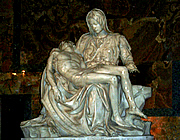
A church that slices through Rome's history, Renaissance and Baroque Rome, almost overwhelming in the amount and quality of art and architecture.Trastavere used to be a very peaceful area on the west side of the Tiber but it, too, is becoming more popular.
Related pages:
Italy: Foundation of Imperial Rome
Italy: Imperial Rome - Pyramid of Cestius, Forums, Colosseum, Baths of Caracalla
Italy: Imperial Rome - Palatine Hill & Domus Aurea
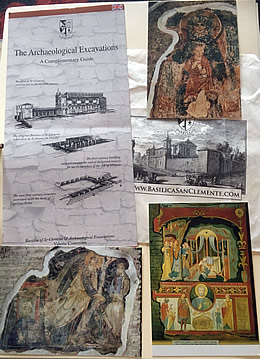
The present Basilica di San Clemente, located not far from the Colosseum, was constructed in the early 12th century, but beneath lie a wealth of archaeological remains dating from as early as the first century AD. In 64 AD a fire had swept through Rome reducing much to rubble. The area was levelled and rebuilding began - here a house with a small Mithraic temple in its courtyard and perhaps a warehouse.1 Above this are the remains of a fourth century church with 8th century frescoes including Christ descending into limbo to rescues souls imprisoned there before his life.
Photography is not allowed in the archaeological remains. The church is well worth visiting for the vivid cross-section it cuts through Roman history.
In the lower level, past the Mithraic temple, is a room thought to be a school room, with a small very poignant fresco of a man, possibly the school teacher2 - the room is closed to visitors and gated so it is difficult to see but possible through the bars of the gate.
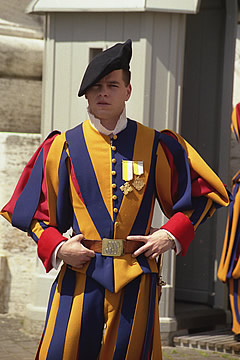
The rise of the papacy from the end of the sixth century returned wealth and influence to the city which prospered for hundreds of years, eventually being dominated by a few families who divided up the plum positions, including the papacy, between them. They also commissioned magnificent works of art, especially during the Renaissance, most particularly from Michelangelo and Raphael.
In the eighteenth century the influence of the papacy declined and the city was occupied by Napoleon in 1798. He declared a second Republic which lasted only 17 years when papal rule was restored. During the nineteenth century the various city states were coming together to form what would eventually become the modern country of Italy. In 1870 Italian troops finally took Rome back from the French and it was declared the capital of the new kingdom under Victor Emmanuel I. The Pope was confined to the Vatican of which he was guaranteed to remain sovereign without jurisdiction over any other part of the city, and Rome began its new life as capital of Italy.
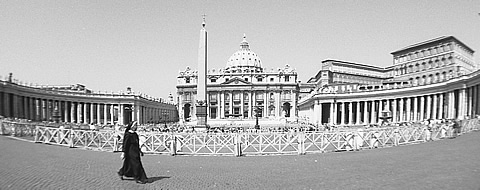
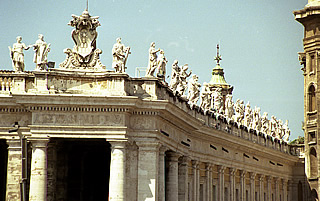
A visit to the Vatican is essential for any art lover. From the Bernini Piazza with its beautiful colonnades to the Sistine chapel with its unbelievable ceiling by Michelangelo, it contains uncountable works of art.
St Peter's itself took over a hundred years to complete from its beginnings by Bramante in the early sixteenth century - Michelangelo designed of the dome. The Egyptian obelisk in the centre was brought to Rome by Caligula in 37AD and placed in the Circus of Caligula which was just south of St. Peter's.
Of the original armed regiments of the pope only the Swiss Guards remain, in their colourful uniforms supposedly designed by Michelangelo.
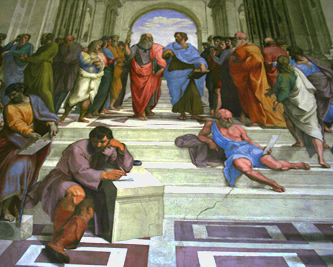
Inside, the Basilica is massive, and the dome rises effortlessly to an immense height in contrast to Bernini's baldacchino, cast from tons of metal taken from the roof of the Pantheon, a ponderous barley-sugar twisted column affair, very Baroque.

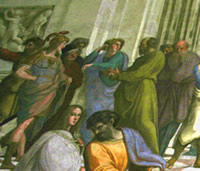
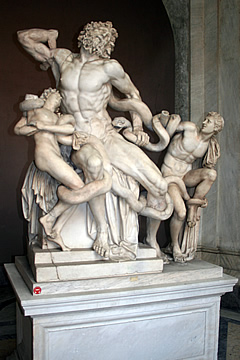 Laocoön
LaocoönSt Peter's holds one of my favourite pieces of sculpture: Michelangelo's Pietà. When I first visited St Peter's it was possible to see the Pietà with nothing intervening but now it is defended by a glass sheet, after some madman tried to attack it.
Inside the Vatican museums there are almost always queues to see the Sistine chapel, but there are some marvellous sights along the way, not least the magnificent Laocoön. In January 1506 the sculpture was unearthed in Nero's Domus Aurea and Michelangelo was reportedly much impressed by it. It is the work of a group of first century BC Greek sculptors from Rhodes, probably a copy of a 4th century BC piece, depicting the death of Laocoön, priest of Apollo, who had angered the god and was crushed to death, along with his two sons, by serpents.
The Raphael Rooms were originally built in the mid-fifteenth century and decorated by, among others, Piero della Francesca. It is sad that these original frescos no longer exist but their replacements are some of the most beautiful Renaissance works of art. Raphael was only a young man when he created these masterpieces, including the magnificent School of Athens. In it he peopled his painting with portraits of his contemporaries including Leonardo da Vinci as Plato and Michelangelo (added after the fresco was complete at which time Michelangelo was painting the Sistine Chapel).
For the interpretation of the painting I have followed the Michelin Guide and the Vatican Museums website.
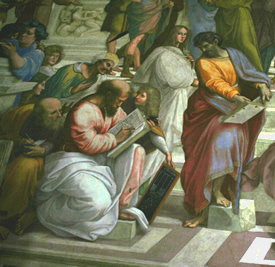
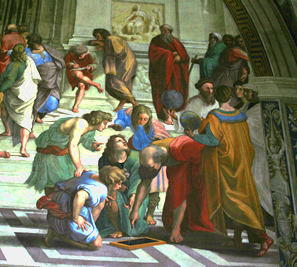
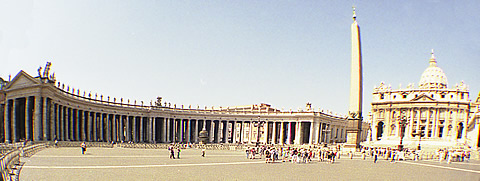
The Sistine Chapel paintings are some of the most impressive works of art anywhere in the world. No photography is allowed in the chapel - though this doesn't stop some people.
I'd visited the chapel many years previously before its restoration and cleaning of the paintings. These are now visibly brighter but I couldn't say that they were any less wonderful - some critics have complained that they have been adversely affected by the cleaning. The paintings on most of the walls were created by a number of artists including Botticelli, Perugino and Ghirlandaio - Michelangelo's teacher. But the Last Judgement, on the wall behind the altar, and all of the ceiling paintings are by Michelangelo. Probably the greatest example of western art, the detail, composition, extent and skill in rendition are just stupendous. The ceiling paintings depict scenes from the Old Testament, including the creation of Adam, the creation of Eve, the temptation and expulsion from the Garden of Eden, the story of the flood, Jonah and the Whale, and David and Goliath. Michelangelo didn't actually want to do the paintings - he considered himself a sculptor, but once compelled by invitation of Pope Julius II to do his bidding, he, as always, insisted on perfection and doing what he considered best. The ceiling took four years to complete and the Last Judgement five years, all the work being completed by Michelangelo alone.
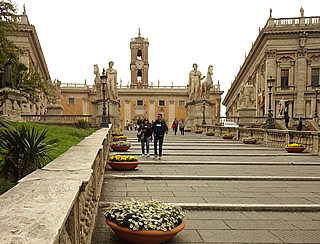
Michelangelo Buonarotti, born in a Tuscan hill town, learned to paint as an apprentice to Ghirlandaio in Florence. The influential Medicis became his patrons and he spent much of his life in Rome with many commissions coming from the popes.
Michelangelo considered himself first and foremost a sculptor and strove to make his figures lifelike, studying and dissecting cadavers in order to understand the structure and placement of muscles and other anatomical features. It was common at the time for artists to take an interest in anatomy in order to improve their art, though few went so far as to perform dissections.
And yet in his art Michelangelo is one of the leading figures of the Renaissance, with arguably the greatest painting ever created, the frescoes on the ceiling of the Sistine Chapel - remarkably his first attempt at fresco. These, too, owe something of their greatness to Michelangelo's accurate depiction of the human form.
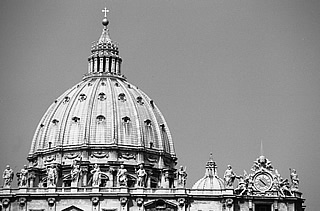
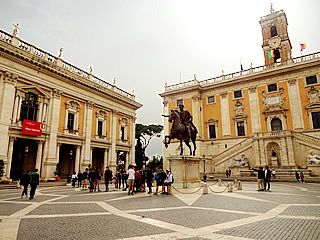

Apart from the beautiful Pieta in St Peter's, the unrivalled ceiling of the Sistine Chapel, and the dome of St. Peter's Basilica which he completed later in his life, there are numerous works of his in the city.
One of the easiest to see is also a final project, an architectural commission which was uncompleted at the time of his death in 1564. The area now known as Piazza di Campidoglio was in desperate need of renovation. Michelangelo gave it a new symmetrical look around an oval piazza. He redesigned the facade of the Palazzo dei Conservatori and built an identical building, the Palazzo Nuovo, across the piazza.
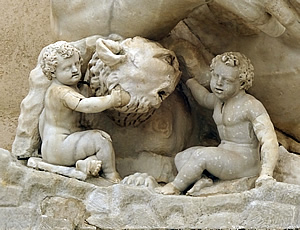
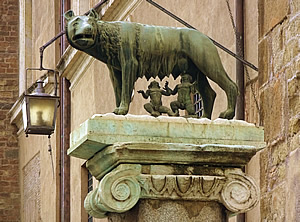
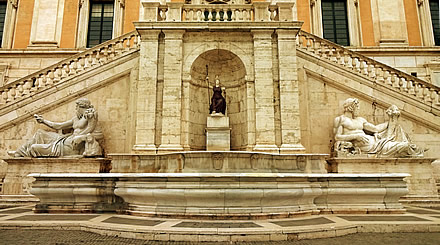
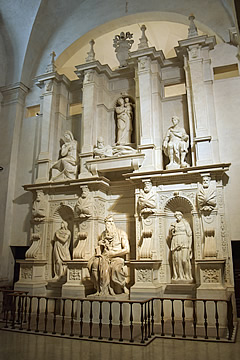
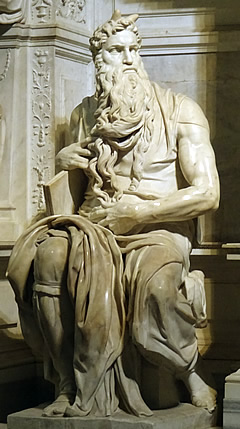
More striking is the ensemble sculpture of Moses, Leah and Rachel in San Pietro in Vincoli. Planned as part of his designs for the tomb of Pope Julius II, Michelangelo was forced to interrupt his work in order to paint the Sistine Chapel. It was to take forty years to complete this one project in a much reduced form from the original plans and many years after the pope's death. Michelangelo himself sculpted Moses, Leah and Rachel, pupils completed other statues on the monumental piece.
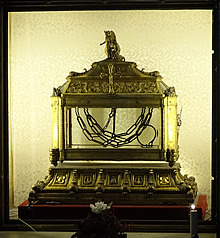
San Pietro in Vincoli was built to house the chains which bound St. Peter in Jerusalem and those which bound him again in Rome.
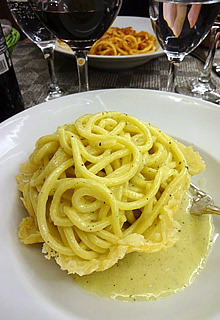
Before visiting San Pietro in Vincoli we had an extremely good lunch about 700m north at Le Tavernelle on Via Panisperna just off Via Serpente. It's well off the tourist trail and full of locals. The staff were great, very friendly.
Great Parma Ham/melon and mozzarella starters. Totally excellent pasta: Andrew had the Bucatini all'Amatriciana - a Roman pasta with tomato, bacon, and Parmesan; I had the Cacio e Pepe in Crosta di Parmigiano - homemade pasta in a cheese and pepper sauce served in a terrific cheesy basket.
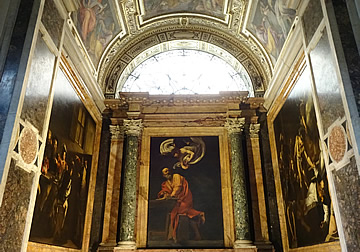
Michelangelo Merisi, known as Caravaggio for the town of his birth, worked in Rome from the age of 21 till forced to flee in 1606 after stabbing a young man to death in an argument - Caravaggio was known for his love of gambling and drinking, his short temper and aggression.
His artistic style was revolutionary, employing extremes of light and dark and using ordinary people of great character as his models, even for religious figures, which offended many at he time.
Wonderful art works of his can be found in San Luis dei Francesi - a cycle of three paintings on the life of St. Matthew, 1600-1602.
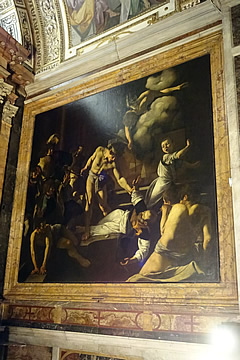
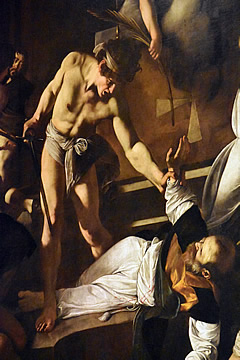
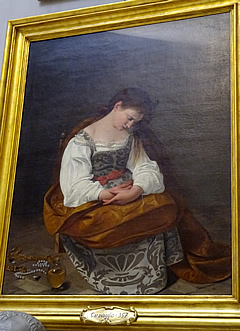
Two more of my favourite pieces are in the church of Santa Maria del Popolo in the Piazza del Popolo: the Conversion of St. Paul and the Crucifixion of St. Peter, completed in 1601.. Very beautiful and recognisably Caravaggio's trademark style of light and dark, these depict St Peter being hoisted into position on the inverted cross, and St. Paul, flat on the ground, and a horse bathed in light - both 1601.
In their realistic treatment of the figures all of these paintings were very avant garde religious images.
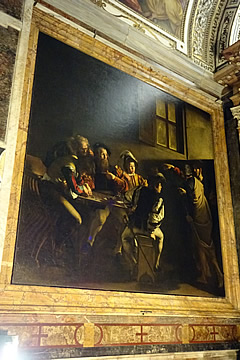
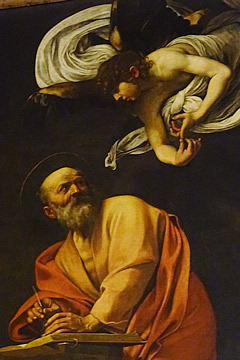
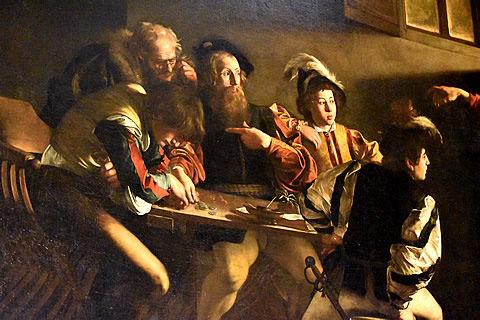
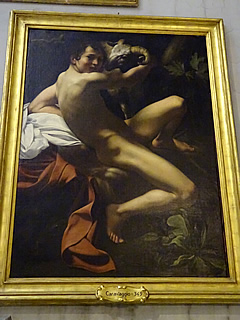
There are also three paintings in the Palazzo Doria Pamphilj: a beautiful Penitent Magdalene, Rest on the Flight to Egypt with an angel intent on playing a violin from sheet music held by an old man, and a copy Caravaggio made of his painting of John the Baptist which now hangs in the Capitoline Museums.
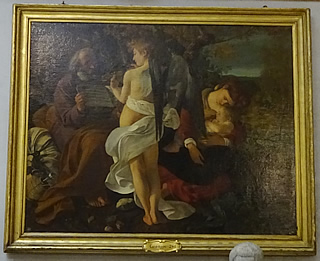

The Piazza della Minerva near the Pantheon has one of the loveliest sculptures in the city: a little elephant sculpted by one of Bernini's pupils, Ercole Ferrata, in 1667 bears a 6th century BC Egyptian obelisk on its back.
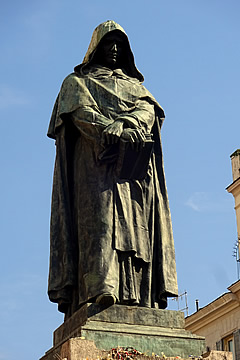

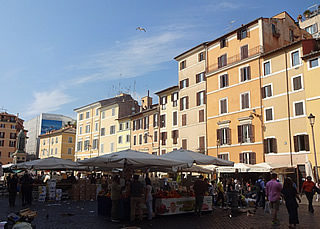
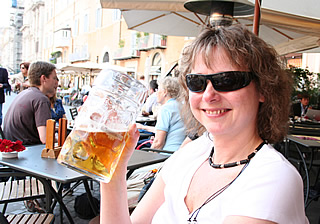
In 2006 we stayed in a hotel close to the Campo dei Fiori - a lovely square with a flourishing market and lots of cafés. We tried pizza bianca here from Forno Campo dei Fiori at the north end of the campo but neither of us were keen.
It was exceedingly hot when we were here in 2006 - we nearly didn't make it back from the Baths of Caracalla! Refreshments in the Piazza Navona or Campo dei Fiori were always welcome though my proficiency in Italian wasn't quite as good as I'd hoped and we ended up with enormous beers on one occasion - at 12 Euros each!
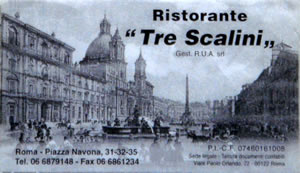
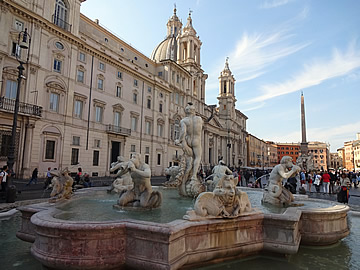
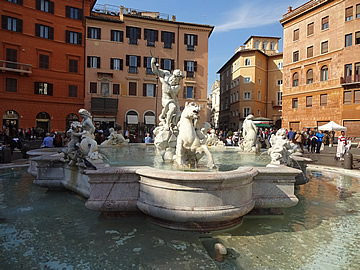
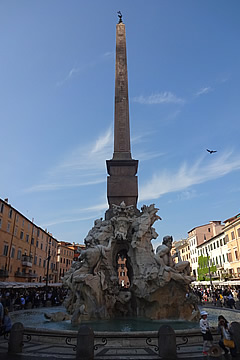
Piazza Navona stands on the site of the 1st century AD Stadium of Domitian, hence its long narrow shape. The remnants of the arena were cleared away in the seventeenth century and Pope Innocent X commissioned most of the structures here, including his Pamphilj family palace.
Boromini designed the facade of the church of Sant'Agnes in Agone (agone from the Greek meaning a physical competition and thus relating to the athletics stadium and nothing to do with the English word agony) on the western side next to the palace.
Bernini won a competition to design the Fontana dei Quattro Fiumi, the four figures representing the great rivers of the four continents that Christianity had reached: the Danube, Ganges, Nile and Plate. He placed an Egyptian obelisk in the centre of the fountain topped with an emblem of the Pamphilj family, a dove with an olive branch. The Moor in the fountain at the south end of the piazza, Fontana del Moro, was also sculpted by Bernini.
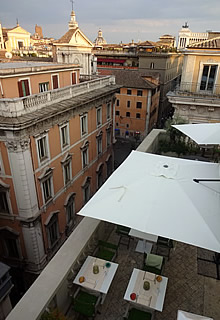
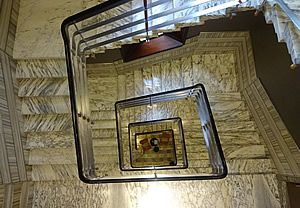
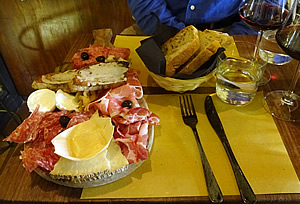
In 2019 we stayed in a gorgeous hotel not far from Piazza Navona, the Singer Palace. It has many of its original art deco features and a beautiful roof terrace. It is very convenient for exploring the city and close to many restaurants.
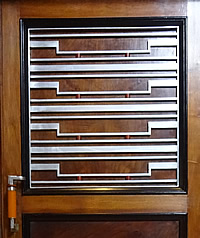
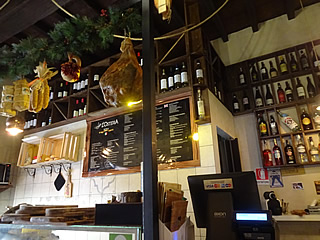
We had a very good lunch at Osteria la Locanda del Prosciutto on Via del Gesu. Superb selection of dried meats (one with a licorice flavour) and chesses, including the excellent Barolo cheese and half a bottle of very good Cincinnato.
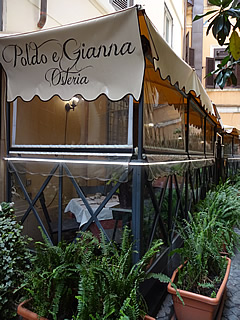
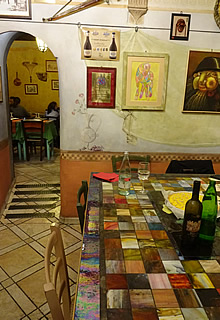
And a very nice light lunch at La Sagrestia very close to the Pantheon where we shared a lovely thin crust Margherita pizza with a glass of wine.
On our final day we ate at Poldo e Gianna Osteria on Vicolo Rosini. A really enjoyable meal which began with a glass of prosecco. Cod and potato croquettes and parma ham with melon, sliced steak with a balsamic glaze, rigatoni al Amatriciana all excellent.
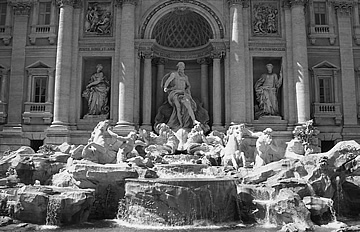
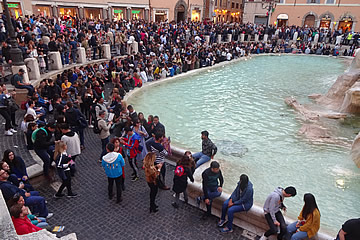
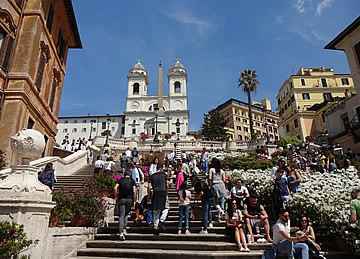
Rome has continued to erect monuments throughout the centuries. One of the most famous is the exuberantly baroque Trevi Fountain.
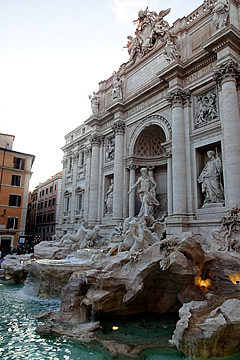
The overblown Monument to Vittorio Emmanuele II - otherwise known derisively as the Wedding Cake - looms over Piazza Venezia, built at the turn of the 19th century to commemorate Italian unification.
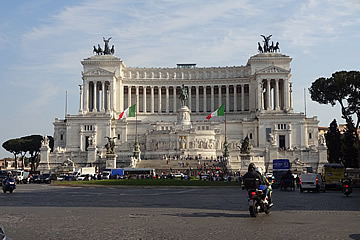
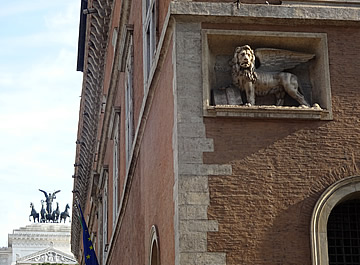
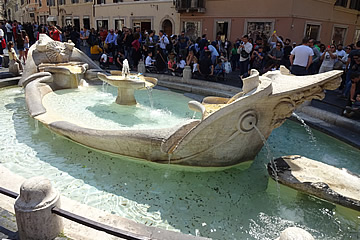
Piazza Venezia is named for the Palazzo Venezia of a Venetian pope, Paul II, who lived here in the 15th century. The distinctive Venetian lion is a dead giveaway on the palace on the west side of the piazza which was for many years the embassy of the Venetian Republic.
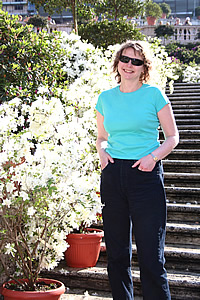
The Spanish Steps - named for the residence of the Spanish Ambassador in the 17th century - are another very popular place for tourists, during the day in tourist season it is always crowded and impossible to get near the lovely boat fountain at the base of the steps, designed by Bernini's father.
Beside the Spanish Steps is Keats' house where he spent the last few months of his life, dying in February 1821 from tuberculosis. He is buried in the Protestant Cemetery near the Pyramid of Cestius.
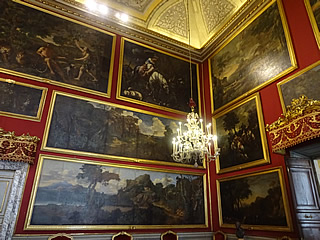
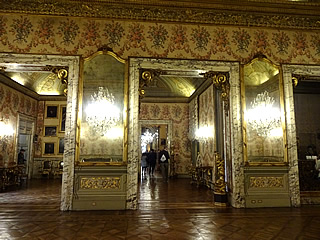
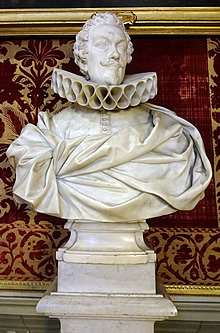
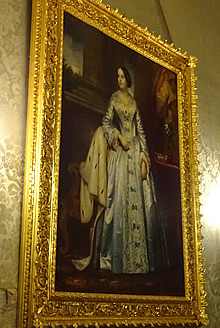
The Doria Pamphilj family are one of the oldest in Rome and they still live in this magnificent Rococo palace. Among their ancestors they can count Pope Innocent X who was responsible for the redesign of Piazza Navona where the Pamphilj family had another splendid palace in the 17th century.
This palace on Via del Corso is partly a gallery open to the public with numerous splendid works of art, including a magnificent Velasquez and three Caravaggios. The collection was entailed by an ancestor so that they couldn't be sold off!
As well visitors can see the private apartments on the same floor and the audio guide is excellent, narrated extremely well by a younger member of the family.3
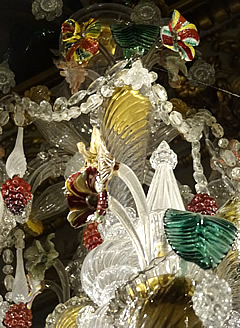
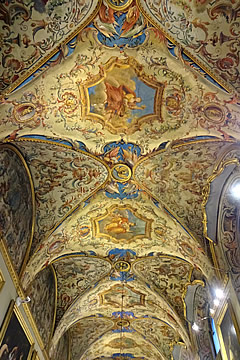
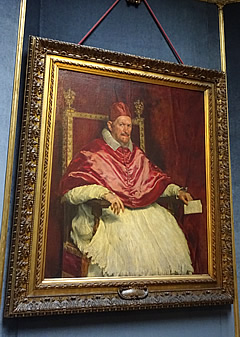
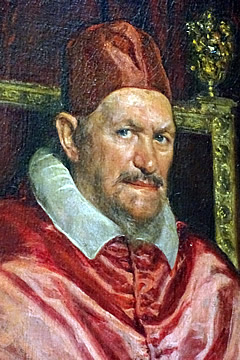
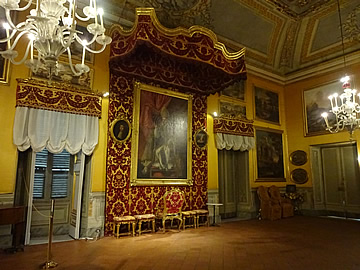
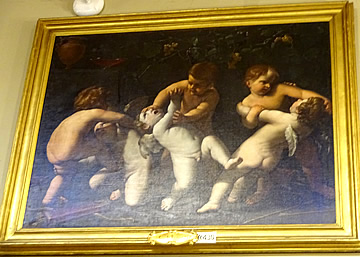
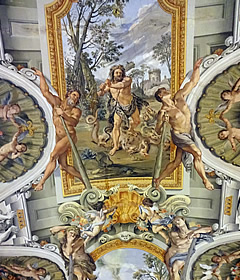
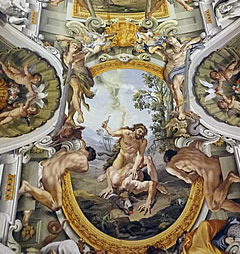
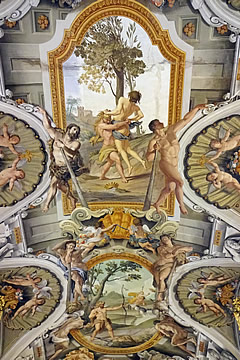
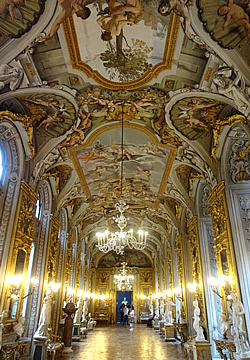
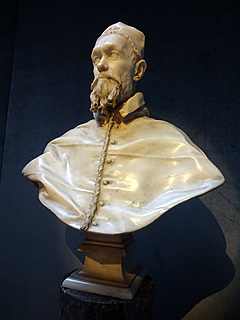
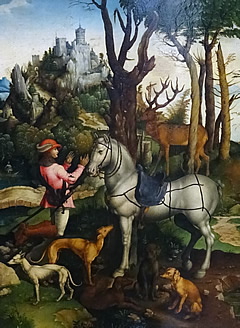
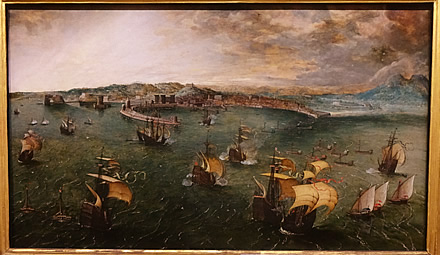
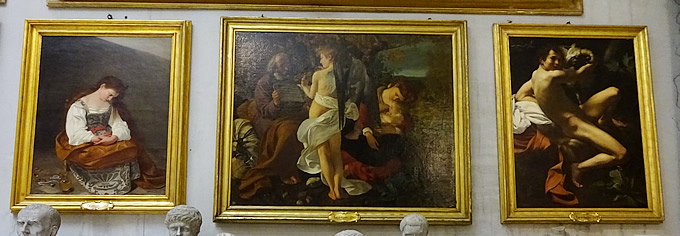
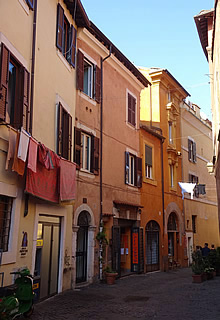
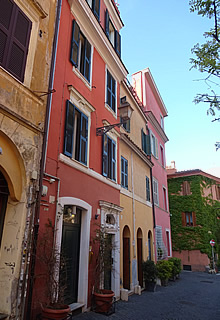
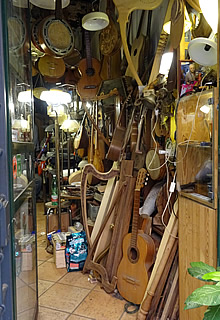
Trastavere across the Tiber is usually more relaxed than the main city. Traditionally it is an area of immigrants due to its position on the right bank of the Tiber, and now a vibrant quarter with many trattorias and a lively nightlife. It was very peaceful when we strolled through the streets one morning in 2006, visiting churches and climbing to Piazza Garibaldi for the view over the city - a bit hazy for good photography.
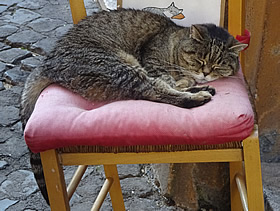
In 2019, admittedly at Easter time, it was quite crowded with people. This time we walked to a higher viewpoint on the Janiculum hill for the views over the city.
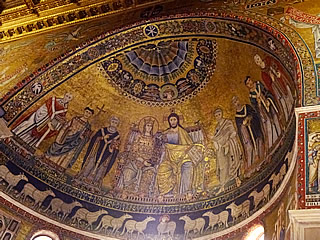
Santa Maria in Trastavere is particularly worth a visit, said to be the first Christian place of worship in Rome, though most of the current building dates from the twelfth century. It is famous for its mosaics, especially the Byzantine-style apse mosaics.